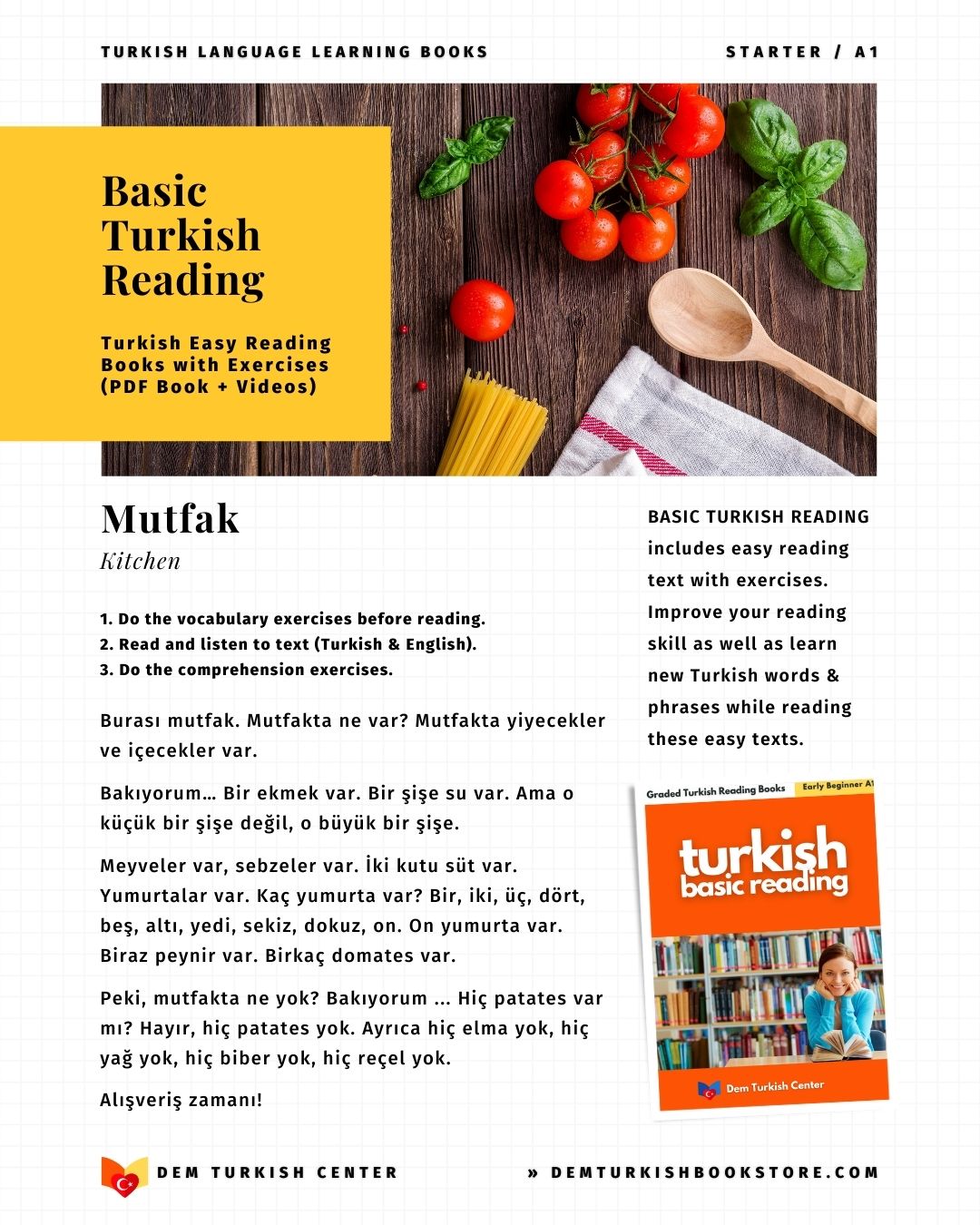
How to improve your Turkish listening skill
Improving your Turkish listening skills involves practice, exposure, and active engagement. Here’s a structured approach to help you level up:
1. Start with Basic Turkish Listening Materials
Children’s Stories and Songs
Begin with children’s songs, stories, and cartoons in Turkish, as they often use simple language and slow pacing.
Basic Turkish Podcasts
Some Turkish podcasts and YouTube channels are specifically made for beginners, introducing slow and simple dialogues that help you pick up new vocabulary and pronunciation.
Download Turkish Easy Reading Practice Course 1 A1!
2. Use Subtitled Content Strategically
Bilingual Subtitles
Watch Turkish series or movies with Turkish and English subtitles. This lets you associate Turkish words with their meanings.
Step-by-Step Subtitle Removal
Once you get familiar with phrases and sentence structures, watch the same content with only Turkish subtitles, then watch without any subtitles at all. This will boost comprehension and memory.
Recommendation
Netflix has several popular Turkish series like Diriliş: Ertuğrul, Leyla ile Mecnun, or The Protector, which often include both Turkish and English subtitles.
Download Turkish Easy Reading Practice Course 2 A2!
3. Practice with Everyday Turkish Audio
Podcasts and Radio
Listening to Turkish news, podcasts, or radio stations like Radyo Fenomen exposes you to conversational speed and more diverse vocabulary.
Slow and Simplified News
Many websites and apps offer simplified or slower news stories for learners. They’re perfect for improving comprehension of everyday language.
Tip At first, focus on understanding the context, not every word.
Download Turkish Easy Reading Practice Course 3 PI!
4. Immerse Yourself with Turkish Audio Content
TV Shows, Series, and YouTube Channels
Watch Turkish shows regularly, even if you’re not actively studying them. Passive listening will familiarize you with Turkish speech patterns, intonation, and pronunciation.
Audiobooks and Turkish Language Apps
Apps like Audible or Google Play Books offer Turkish audiobooks that can be ideal for listening practice. Listening to stories can also be more engaging as you’re following a storyline.
Recommendation
Follow popular Turkish YouTube vloggers or TV personalities whose speech patterns resonate with everyday Turkish.
Download Turkish Easy Reading Practice Course 4 B1!
5. Shadowing and Repetition
Shadowing Technique
Repeat what you hear as closely as possible to the original audio. Shadowing builds fluency and listening comprehension because it trains your ear to identify common patterns in real time.
Sentence Repetition
Rewind short audio clips and listen repeatedly until you can anticipate the meaning without translation. This builds confidence in understanding spoken Turkish.
6. Use Listening Practice Apps and Resources
Language Learning Apps
Apps like Duolingo and Pimsleur offer listening exercises tailored to Turkish learners, making them a good addition to your study routine.
TurkishDict’s Audio Library
This has audio of common Turkish phrases and sentences, organized by theme. You can listen to everyday phrases repeatedly until you become familiar with them.
7. Engage in Active Listening and Note-Taking
Transcribe Audio Clips
Pick a short, challenging Turkish audio and try to write down what you hear. Then check your transcription for accuracy, focusing on missed or misheard words.
Vocabulary Notebook
Write down unfamiliar words, then look them up afterward. Review these regularly to help with retention and recognition next time you hear them.
8. Practice Conversational Listening
Language Exchange
Connect with Turkish speakers on platforms like HelloTalk, Tandem, or Speaky. Engaging in conversation pushes you to practice real-time listening.
Conversational Shadowing
Listen to native speakers in real conversations and mimic the phrases and intonations they use.
Combining these techniques and steadily challenging yourself will help you steadily improve your listening skills and expand your vocabulary naturally.













